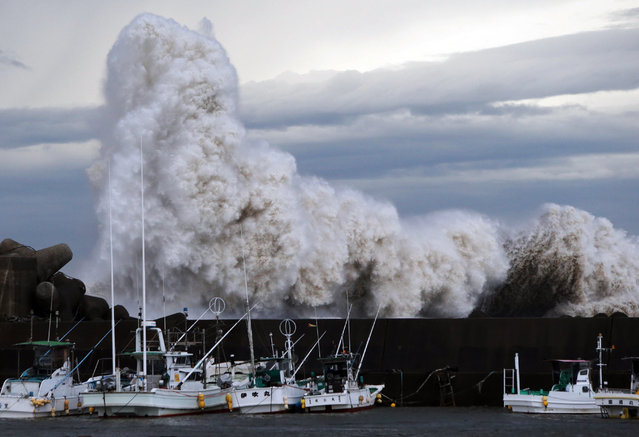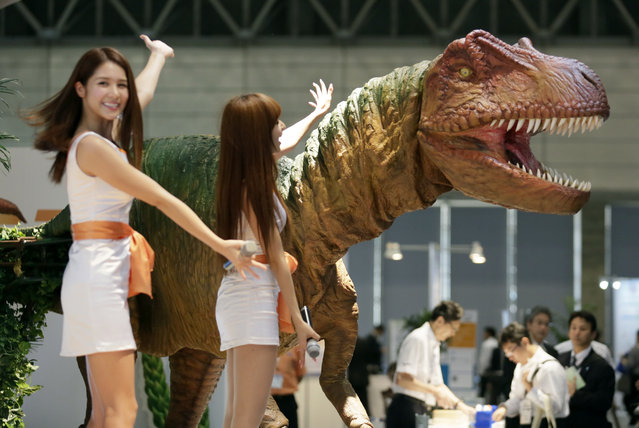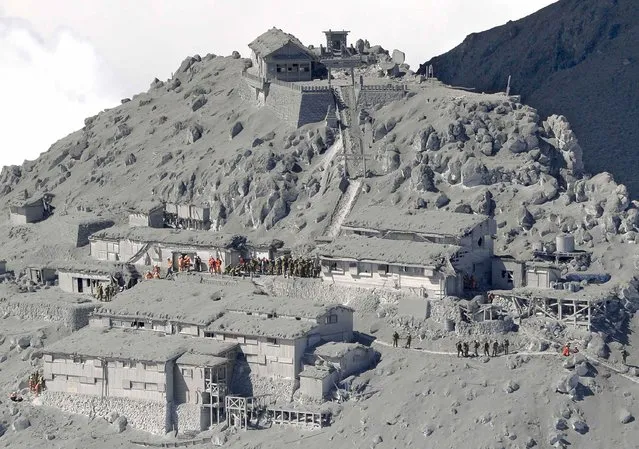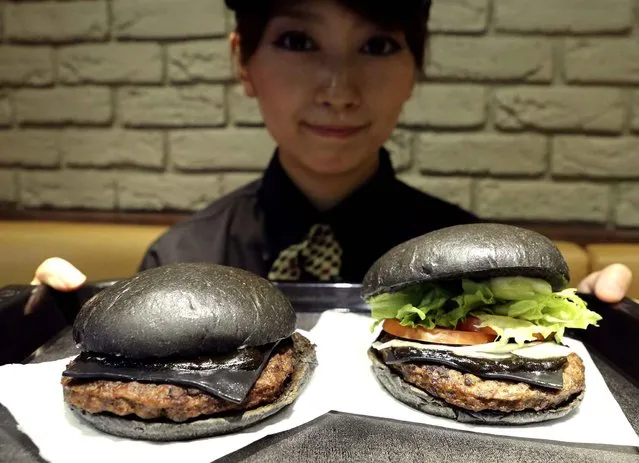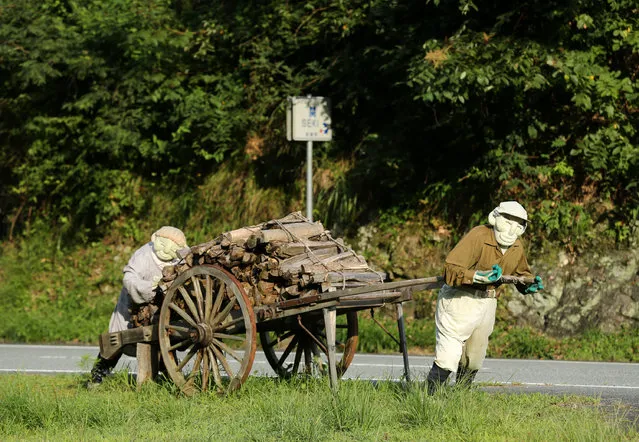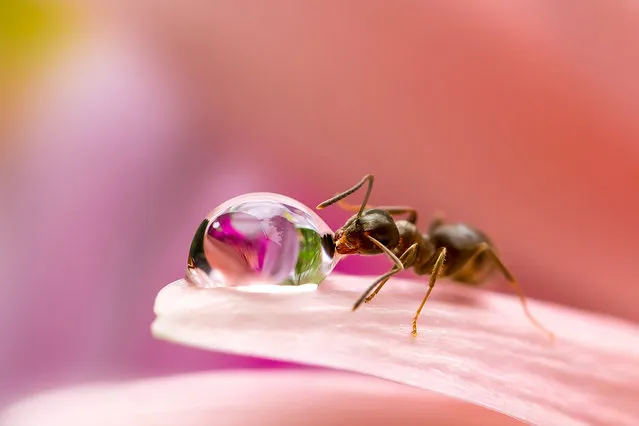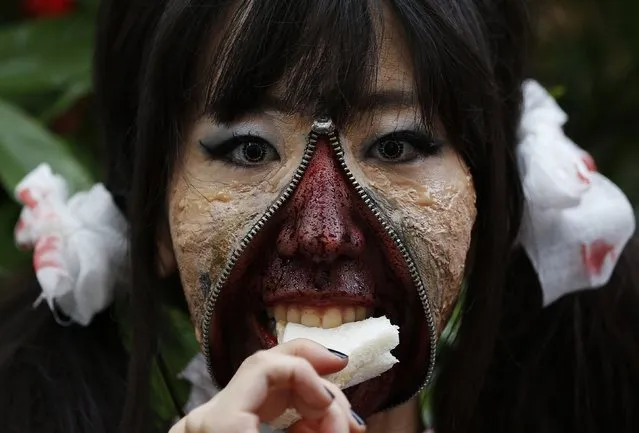
A participant in costume eats a sandwich after a Halloween parade in Kawasaki, south of Tokyo, October 26, 2014. More than 100,000 spectators turned up to watch the parade, where 2,500 participants dressed up in costumes, according to the organiser. (Photo by Yuya Shino/Reuters)
26 Oct 2014 12:29:00,post received
0 comments

